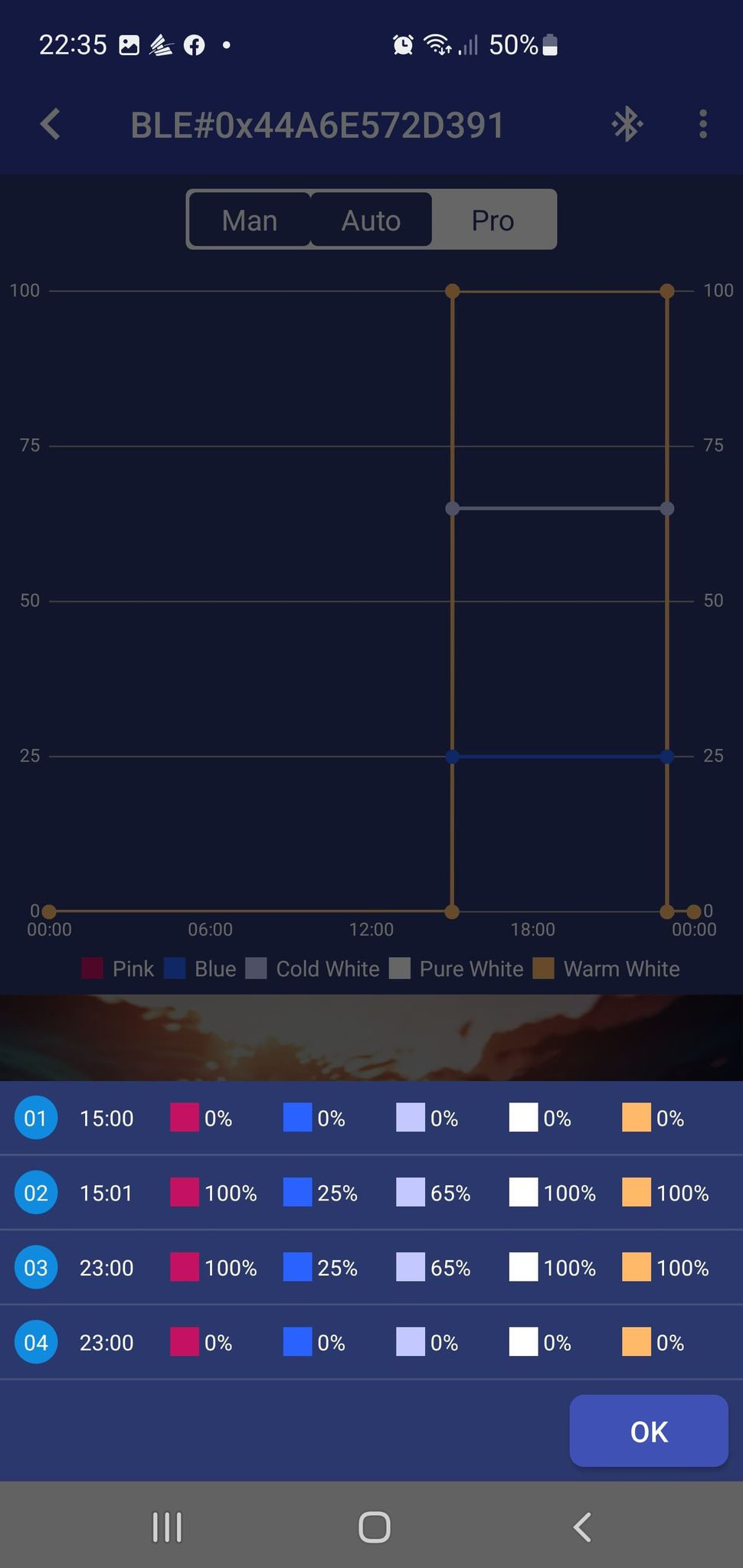
Taking what we've learned from the "Dialing in your programmable LED aquarium light" blog post, the Univerity of Michigan found that warmer LEDs, or straight-up red LEDs stimulate the most growth. Well then why not just crank up the reds on your Fluval 3.0? Because Fluval doesn't have dedicated red LEDs. So this article will guide you through how to get the most out of your light.
Assumptions
These settings assume that you are:
Running CO2, and achieving a one-point PH drop before the lights come on. If you are running CO2, make sure you are getting a full one-point PH drop, before the lights come on. If you need help with that, check out our "How to set up a CO2 system...." YouTube video. The light produces 110 PAR at 12", so you're not going to want to max this light out if you are NOT running CO2. If you are NOT running CO2, or your tank is shallower than 12" skip to this section. If you are NOT running CO2, but your tank is deeper than 12", you might be able to get away with values that are for this injecting CO2. Having a tank deeper than 12" will reduce the PAR the substrate is getting.
Your tank is 12" high. If your tank is shallower, you'll need to reduce the PAR a bit. We suggest you run the non-CO2 values.
You have a larger plant mass with faster-growing plants. You can get away with blasting slow-growing plants, like buce and anubias with 110 PAR, but it requires the aquarist to be more skilled with balance. If you are just starting out and have all slower growing plants, even though you are injecting CO2, reduce the PAR.
Fertilization is where it needs to be. With high PAR values and CO2 injection, we are going to ask the plants to grow like crazy. If you are not running a holistic fertilization method like Thrive (all in one), or the EI method, you'll want to make that addition to the tank prior to making these adjustments, or running the non-Co2 values.
Settings with CO2 injection
Start with your lights turning on for no more or less than 8 hours. Keep the ramp to a
minimum and WITHIN that 8-hour photoperiod.

Let's make this really simple. Run the light at these values for a total of eight hours:
Pink - 100%
Warm White - 100%
Pure White - 100%
Cool White - 65%
Blue - 25%
Again, the reason for using these values, is that warmer spectrums really excited growth. This is why all of our warmer channels are maxed out, and our cooler channels are turned down, especially blue. Many will say that blue should not be used, but we do need a nice amount of blue for photosynthesis, we just don't need a ton of it. These settings will give you the perfect.
Settings without CO2 injection
If you are NOT running CO2, that is ok! Dialing in the spectrum is still important to make sure we keep our plants happy and healthy. What we want to do is keep the same ratio, but just dial back the intensity. This way we are not blasting the tank with 110 PAR. The target to hit is 80 PAR at 12". These settings will help you get close to that:
Pink - 75%
Warm White - 75%
Pure White - 75%
Cool White - 16%
Blue - 7%
Running these settings we are dialing back to the PAR to around 80. Again this is the max you'll want to go without CO2. Excess light can lead to algae. If you start experiencing algae at these lower values, run through our ASG Method Checklist, skip the CO2 section of course, and make sure all the other parameters are in check. If everything else is where it needs to be, then dial back the ratio a little more until you find your sweet spot... but again, try to keep the light settings in this specific ratio.
If you have any questions, leave a comment below and we'll do our best to try and answer any questions you might have. Later scapers!

I have a 150 G, 24" deep tank. Low tech plans, ie. Anibias etc. No CO2. Alga like crazy Running dual Plan 3.0's. Im at 60% whites, 6 blue and 15 red. Im confused as to where I need to be for optimum.
I have a 125 with 2 36 inch Fluval Plant 3.0's on each side. No CO2. Would you just cut your "no CO2" recommendations in half? What about making up for the depth? It's about 18 inches from substrate to lights. Most of my plants are low or medium light such as swords and anubias.